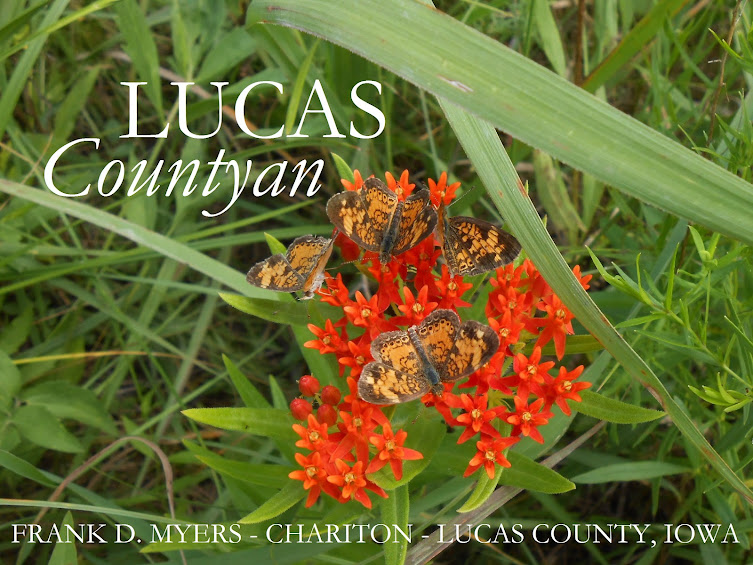I started this multi-part story about the life and times of George Todd on Thursday with a post entitled, "George Todd (Part 1): From slavery to Chariton." George interests me because (a) he was among the first Lucas Countyans born into slavery who settled in Chariton after the Civil War and (b) because it's actually possible to find quite a bit of information about him.
But there are all sorts of complications, including the fact we don't know exactly when George was born --- and it's likely that he wasn't sure either. George could neither read nor write and he was born into slavery to parents who were enslaved --- so it's unlikely that any sort of written record existed. George complicated the situation by providing various birth years and, during his final years, by adding as many as 20 years to the total.
He gave his age as 32 when he registered for the draft in Henry County during July of 1863 and as 33 when he enlisted a month later. His age was given as 49 in the 1870 census enumeration of Chariton and as 66 in the 1880 census of Barton County, Kansas. When the 1900 census of Rice County, Kansas, was taken 20 years later, George provided a specific birth month and year of April 1836, making him 64 years old at the time. But his age was given as 95 in the 1910 census of Rice County --- and as death approached in 1914, he claimed to be 104 years old.
I've arbitrarily assigned a birth year range of 1830-31 to him, based upon the thought that the oldest record found stands a good chance of being the most accurate.
+++
George seems to have been a story-teller and that location is taken from a story about him, headlined "Aged Negro Tells of Man Who Was Skinned Alive" that was published in The Hutchinson (Kansas) Gazette of Jan. 12, 1912, two years before his death.
The story begins, "It was in the year 1846, Uncle George says, that he witnessed a bunch of Indians skin a white man alive. The occurrence was near the present site of Humboldt, in the eastern part of the state."
Then it continues, " 'It was the time when the Mexican war was on,' said Uncle George. 'My Massa, Coy (or Col.) Wilse, went and took his little boy with him and I went along to take care of the young Massa. We crossed the line from Bolivar, Mo.,, and stopped on a small creek. One morning a man who lived there somewhere got drunk and said he was going to kill an Indian before breakfast. He killed the Indian and she was a woman.' "
The rest of the story involves the punishment accorded to the perpetrator by the dead woman's family --- he was captured, scalped and skinned alive, according to George's account.
Then the article continues, "Uncle George says he spent a considerable portion of his life near Bolivar, Mo., and it is from the records in the courthouse there that he is able to determine his exact age. He says that the records likewise show that taxes for many years were paid on his valuation as a slave in the Missouri town."
It certainly would be helpful if that reference to a "Col. Wilse" led to a specific person --- but so far as I could tell, it doesn't. I think it likely that the reporter invented a spelling for a name spoken by George and didn't get it right. Whatever the case, I failed to turn up anyone who might have been Col. Wilse, so my research dead-ended.
+++
Two things become evident when reading about George. He was accustomed to standing up for himself, as will become more evident in a future post; and he was proud of his African roots.
His entry in the 1870 census of Chariton indicates only that both of his parents were of "foreign birth." In the 1880, 1900 and 1910 census records, he gave the places of birth of both his parents as "Africa."
The 1900 census record is shown here at the top and immediately below:
Also included in the 1912 newspaper report is the sentence, "He says his father and mother were brought direct from Africa."
Next time: George's encounters with the Chariton media.















































